“Gretsch assumed, because he’s in Nashville, Chet Atkins must be into steers, cacti, and round-ups”: Behind the scenes at the new Gretsch museum
Aaron Phillips and and Dr. Matthew Hill give Guitarist a tour of of the Fred and Dinah Gretsch Instrument and Artifact Collection at Georgia Southern University
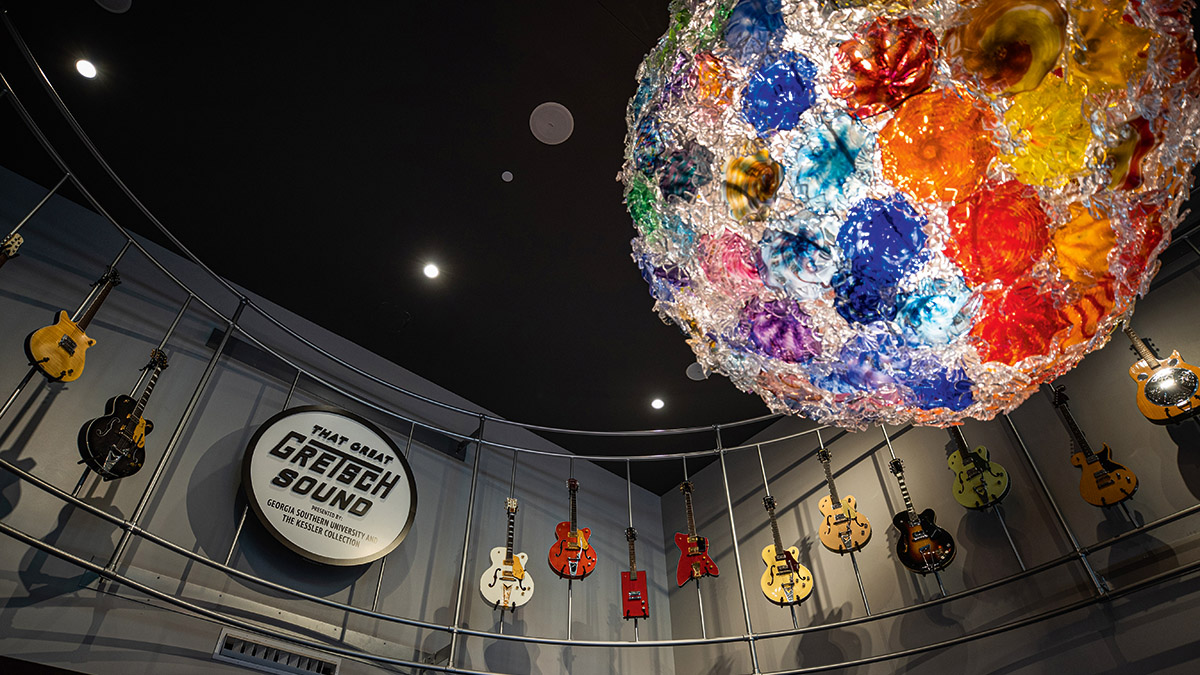
Apart from funding music education at the university itself, Fred and Dinah Gretsch have donated some historic Gretsch guitars and other artifacts to a museum overseen by Georgia Southern University.
Situated at the Plant Riverside District in Savannah, it tells the story of the development of Gretsch as a major force in the guitar marketplace and contains some of the brand’s most prized vintage instruments. We join coordinator Aaron Phillips and curator Dr. Matthew Hill to find out more.
How did the museum come about?
Aaron Phillips: “Fred and Dinah Gretsch have been in the Savannah area now for over 30 years and they have always had partnerships with Georgia Southern – they’ve had a scholarship in our School of Music, and another one in our business program – so they’ve always had a vested interest in the university.
“They approached our new president, Dr. Kyle Marrero, about making a large gift to the university. It all really started with them wanting to fund our School of Music, because if you know Fred and Dinah at all, especially Dinah, her life’s work is in music education. She’s worked with the Georgia Music Foundation here in the state of Georgia for over 25 years.
“With that financial donation and the partnership with the School of Music, they also decided to donate their entire personal collection of instruments, artifacts, personal records, and a lot of company stuff relating to artists.”

And the museum itself is housed in downtown Savannah?
Get The Pick Newsletter
All the latest guitar news, interviews, lessons, reviews, deals and more, direct to your inbox!
Phillips: “Our current president had the idea to partner with Richard Kessler, who runs the Kessler Collection here in Georgia – he’s got a series of hotels and resorts around the world. They had just built a new downtown district in Savannah and they were adding on a new building to an existing hotel.
“They bought an old power plant that sits on the Savannah River, this historic building, and renovated it. That building in and of itself as well is kind of a museum, too, dedicated to natural resources and natural history from around the coastal plains.
“They wanted to do something similar with that new building and our president happened to be having lunch with Richard Kessler, two or three days after we had just signed the contracts with Fred and Dinah. He said, ‘Well, Georgia Southern is about to be getting this huge collection of historic rock ’n’ roll instruments and all this other stuff. So maybe we could do a rock ’n’ roll museum?’ It’s called District Live, which is partnered with Live Nation and they have a concert venue there. So Richard Kessler said, ‘Yeah, sounds good!’”
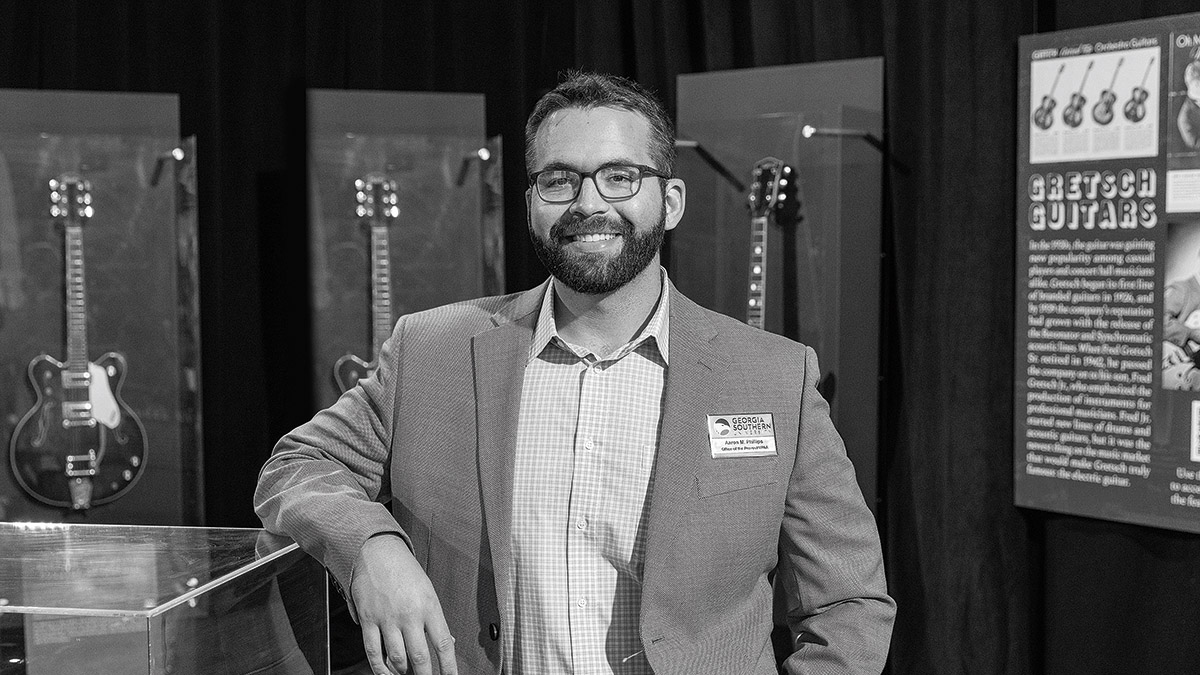
How big is the exhibition?
Phillips: “We’ve got over 100 guitars on display down there, some drum sets and, in addition to the instruments, Fred and Dinah essentially let us come into their offices and go through them for historical artifacts – anything that we thought would not only contribute to this exhibit but would contribute to a robust artifact collection to be housed at the university as well.
“So we’ve got some really, really cool stuff – everything all the way back to the late 19th century, early 20th century band instruments, you know? A lot of people don’t know that Gretsch produced and sold brass and woodwind instruments for school bands back in the day. So we’ve got a bunch of those.”
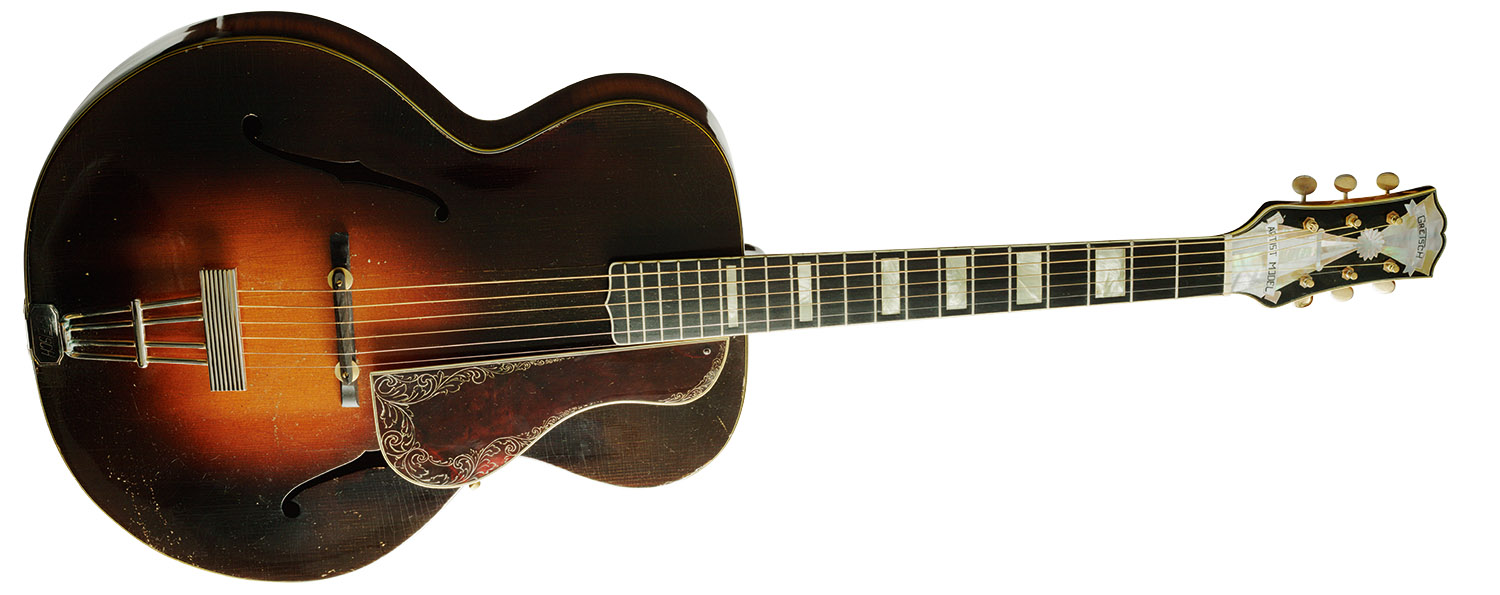
So the museum delves right back into Gretsch’s history?
Dr. Matthew Hill: “To expand a little bit on what Aaron was saying about the company, people know that Gretsch is an old company, but I think they have a misunderstanding of what the company was then as opposed to now.
“Originally, they started off as very much a general musical instrument manufacturer that specialized in drums. Back in those days, because of the way musical instruments were sold – literally by traveling salesmen going to music stores – they would try to sell the music store everything. They didn’t have specialization like they do now.
“So even though the company specialized in making drums and percussion instruments, they had other things that they sold because that’s what companies did if they wanted to be successful. So they started off making drums and they segued into banjos, because basically a banjo is just a drum with a neck on it.
“Then, if you take the neck off the banjo you’re almost there all the way to a guitar. And so they went into guitars. I mean, that’s greatly oversimplified, but that’s essentially what happened. And, of course, when the electric guitar thing came out in the early 50s, they’re like, ‘Oh, yeah, we should make these.’”

What instruments would you say represent the highlights of the museum’s collection?
Phillips: “We don’t necessarily have the greatest idea of everything we have still. We’re just through the first phase of cataloguing all of our guitars in conjunction with a few grad students that we have here at the university. But what we can tell you is we’ve got probably two dozen Chet Atkins Country Gentlemans, the highlight guitar in their catalog over the years.
“We’ve got several White Falcons that I think everyone would recognize, but probably the coolest guitars that we have, though, are the 6130 Roundup guitars. Matthew and I are absolutely obsessed with those! They were the smaller solidbody electric guitars that Gretsch made to continue to appeal to the Chet Atkins audience and the country and western audience.
“And one of the coolest stories about the Chet Atkins guitar is how on the very first one that Gretsch made for him in 1954, they put all of that country and western iconography on it because they were a Brooklyn manufacturing company who is all of a sudden partnered with a Southern country artist…”
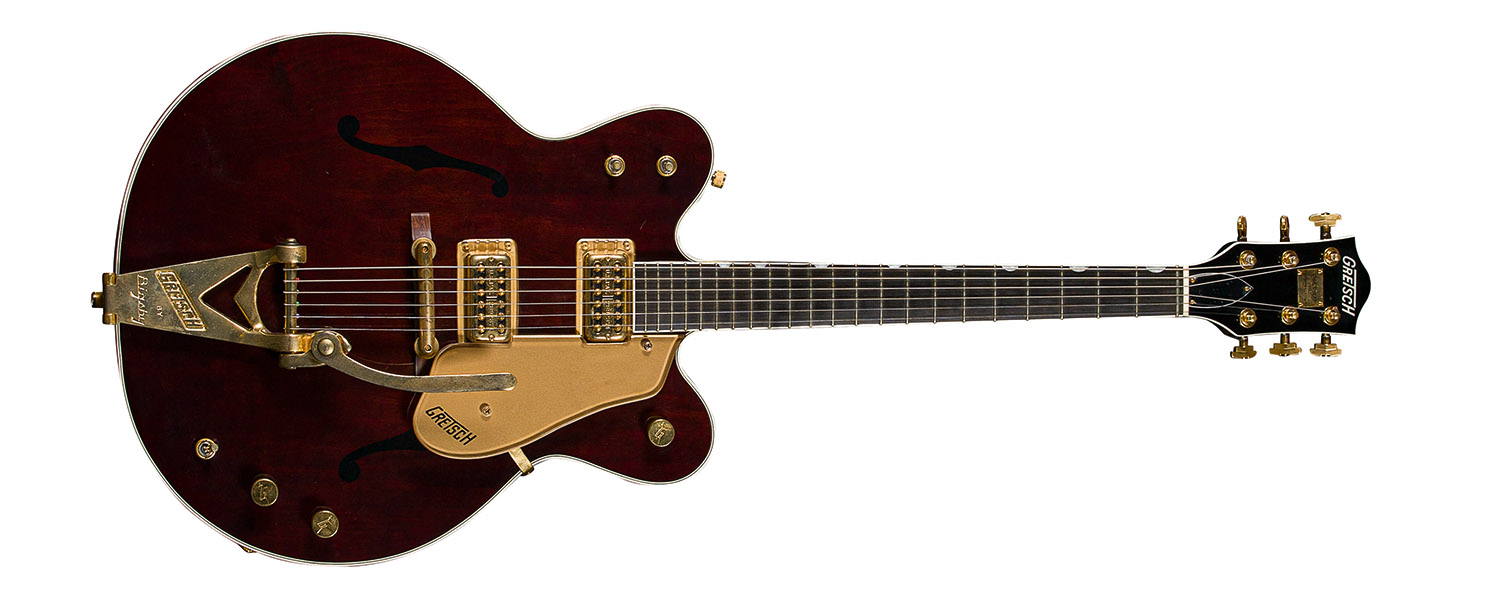
Hill: “And they basically assumed that because he’s in Nashville, he must be into steers and cacti and guns and old fence posts and round-ups and chuck wagons because, of course! Whereas in real life Chet Atkins is the kind of guy who goes, ‘No, I like my martinis dry.’ You know what I mean? The best thing is they actually got a branding iron and branded a huge G on the top of the guitar.
“You’ve got to remember that these were incredibly expensive guitars. A Roundup, which is essentially pretty much identical to a Duo Jet but cost almost twice as much, was more expensive than a Les Paul Custom.”
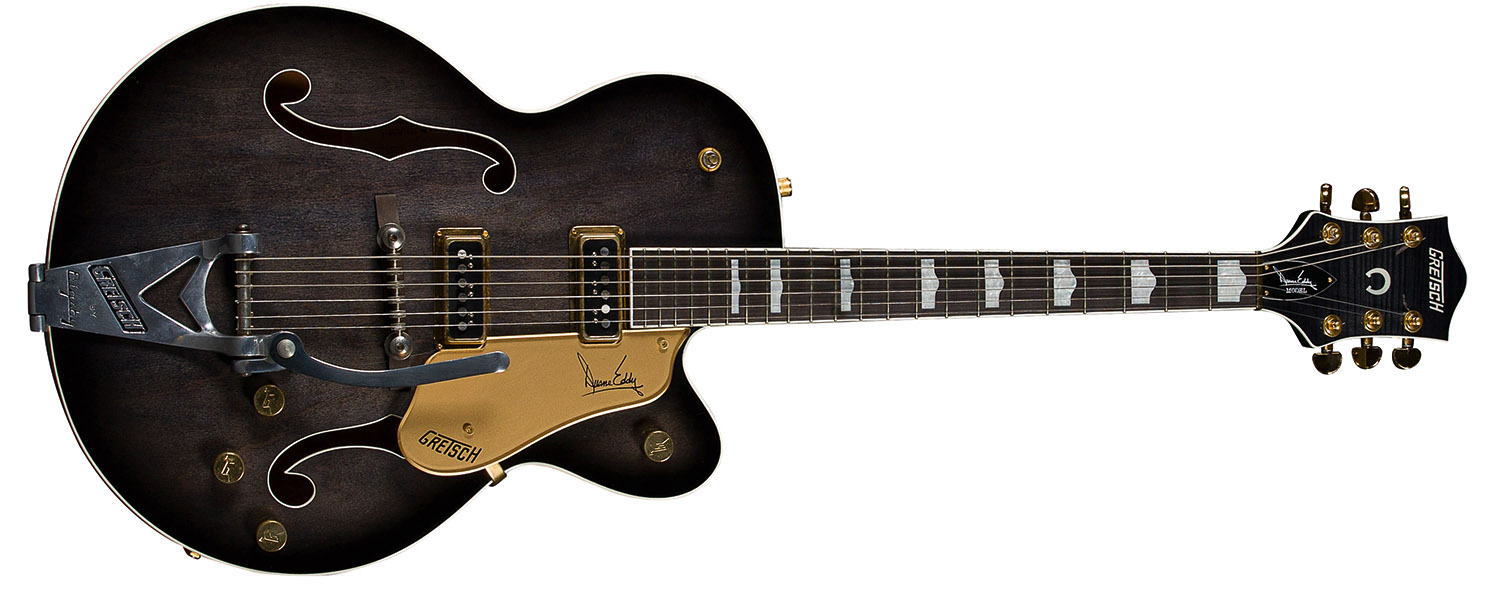
What sort of form does the museum take?
Phillips: “We have guitars that really run the gamut. Some of our earliest go back to the early 1930s. There are two sections [to the exhibition]. The first section is where we put up the best of the best because it’s what everyone sees first.
“So those are our biggest and flashiest: White Falcons, we’ve got our Duane Eddy there, Brian Setzer Custom, the Malcolm Young guitars, Bo Diddley – all the real iconic ones. But then what we did in the second room, which is the concert venue – it’s basically just a big square room with the stage at one end – we have three walls to work with.
“I started at one corner and went around the room in chronological order, so you could see the evolution of Gretsch guitars over the years. If you start on one end and walk around the room, you begin with our earliest guitar, an early 1930s tenor acoustic.”
- To learn more about the Fred and Dinah Gretsch Instrument and Artifact Collection, visit Georgia Southern University.
With over 30 years’ experience writing for guitar magazines, including at one time occupying the role of editor for Guitarist and Guitar Techniques, David is also the best-selling author of a number of guitar books for Sanctuary Publishing, Music Sales, Mel Bay and Hal Leonard. As a player he has performed with blues sax legend Dick Heckstall-Smith, played rock ’n’ roll in Marty Wilde’s band, duetted with Martin Taylor and taken part in charity gigs backing Gary Moore, Bernie Marsden and Robbie McIntosh, among others. An avid composer of acoustic guitar instrumentals, he has released two acclaimed albums, Nocturnal and Arboretum.
“I just learned them from the records. I don’t read tabs or anything, I don’t read music – I learned by ear”: How a teenage Muireann Bradley put a cover of Blind Blake’s Police Dog Blues on YouTube and became a standard bearer for country blues
“The Strat was about as ‘out’ as you could get. If you didn’t have a Floyd Rose, it was like, ‘what are you doing?’”: In the eye of the Superstrat hurricane, Yngwie Malmsteen stayed true to the original











